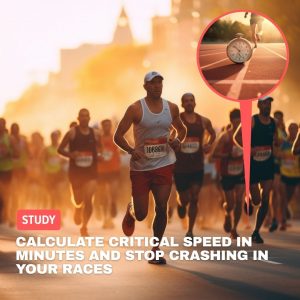Last week we looked at the abnormally high incidence of exercise-induced asthma in runners and other endurance athletes.
High volume endurance exercise exposes your lungs to a much greater amount of airborne irritants like pollen, particulates from pollution, and cold air. These are especially bad in the winter and spring. Some studies have found that up to half of all elite distance runners show some form of airway restriction in cold or pollinated air!
This week, we will take a look at what actually goes on during an exercise-induced asthma attack and how runners can manage it.
How exercise-induced asthma occurs
Research indicates that the inflammation and restriction of the airways that occurs during an episode of exercise-induced asthma is due to the release of inflammatory chemicals from cells near the surface of the airways.
The inhalation of large volumes of cold or dry air during exercise dries out the outer surface of the airways, triggering a release of inflammatory chemicals and ultimately resulting in inflammation and airway constriction. The chemicals are released by cells called mast cells, which mediates many inflammatory conditions and have been implicated in a range of diseases, from allergies to autoimmune disorders.
Unfortunately, it’s not clear why some people have an aggressive, inflammatory reaction to water loss from the surface of their airways, while others do not.
Treatment and prevention
The most obvious way to treat or prevent exercise-induced asthma attacks is to reduce or prevent the release of the inflammatory chemicals from the mast cells or to blunt the body’s response to the inflammatory irritants. As such, most drug treatments are based around one of these strategies.
The mainstay of asthma prevention is a class of drugs called short-acting beta-adrenergic agonists. These drugs, which include albuterol, Ventolin, Xopenex, Bricanyl, and other perhaps-recognizable names if you’ve had asthma, work to counter the inflammatory reaction in your airways.
By altering the chemistry inside your airway muscles, they cause a relaxation of the airways, ensuring normal breathing.
According to a 2004 review by Sandra D. Anderson, short-acting beta-adrenergic agonists provide 80% protection from exercise-induced asthma when taken five to 15 minutes before exercise.
Unfortunately, the protective effect with these drugs only lasts about two hours.
On the other hand, they are the best “rescue medication” for when your airways are already constricted from exercise-induced asthma.
Other medicines, which try to prevent the release of inflammatory chemicals or stabilize the mast cells aren’t as effective when airway restriction has already occurred. In order to be effective in athletes, short-acting beta-adrenergic agonists need to be taken using an inhaler.
There are also long-acting beta-adrenergic agonists like formoterol (Foradil) and Advair. These can provide good protection over longer periods—up to 12 hours. Unfortunately, they have a tolerance effect: When used on a daily basis, the body becomes accustomed to their presence, making them less effective. They are usually reserved as additional supplemental medications for asthma, not as a standalone treatment.
Two other drugs, cromolyn (Intal) and montelukast (Singulair), work by stabilizing the mast cells. According to Anderson, these drugs are less effective than the short-acting airway relaxants, providing only 50-60% protection. However, they do not induce tolerance, and their dosage can be easily modulated. Cromolyn is effective for only 1-2 hours and is usually taken with an inhaler, while montelukast is a tablet that is effective for 24 hours.
Understanding therapy
While the specifics of your treatment plan should be worked out between you and your doctor, having an understanding of the range of medications that are used for treating and preventing exercise-induced asthma and how they work will give you a better understanding of your therapy.
- The most important takeaway message is that there is no one perfect medication for everyone—even the best class of drugs discussed in Anderson’s review paper was only about 80% effective—so you’ll probably have to work with your doctor to figure out the right combination of treatments for you, which may take a while.
- Additionally, it’s important to remember to follow the instructions, which come with your medications! Many of the drugs we discussed, like cromolyn, are not effective after exercise-induced asthma has already been induced. Being sure to remember to use your inhaler and your prescribed medications before a run, a workout, or a race will help you avoid the painful and frustrating effects of airway restriction during exercise.





3 Responses
These medication break downs are great but most of us who suffer from EIA have probably already determined the regimen that works best for us. My doctor and I have realized that, for me, a long lasting inhaler raises my heart rate so albuterol has been all that works well enough. I’ve heard chi running might also help but dealing with allergies (stuffy nose) makes breathing in through the nose impossible most days. Unfortunately, I am one of those peeps who can’t take a decongestant because, again, it raises my heart rate. I wonder what other remedies are available. EIA has diminished my performance immensely since developing it as a result of pneumonia.
I wonder how Paula Radclif deals with EIA. I’ve read articles that she has it but now how she controls it.
I’ve found a way of preventing my EIA from starting when I run, which is mostly trail running 9-15 miles.
I simply keep my chest/lungs open while I rung and letting the diaphragm move at its own pace. It’s that simple. Just hold your chest open and the EIA never starts up.
Terry
Thanks for your input Terry! Others will be able to give this a try, to see if it helps!